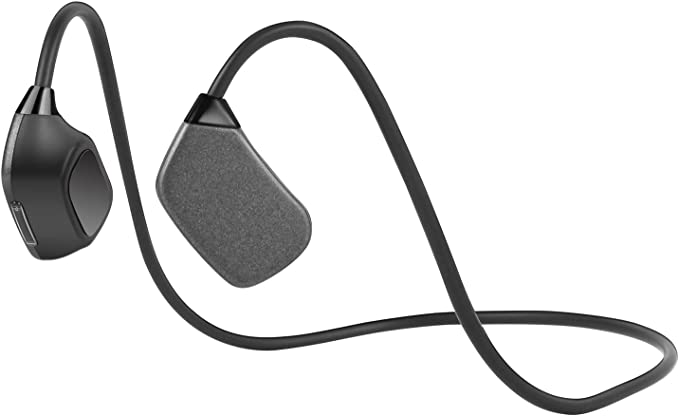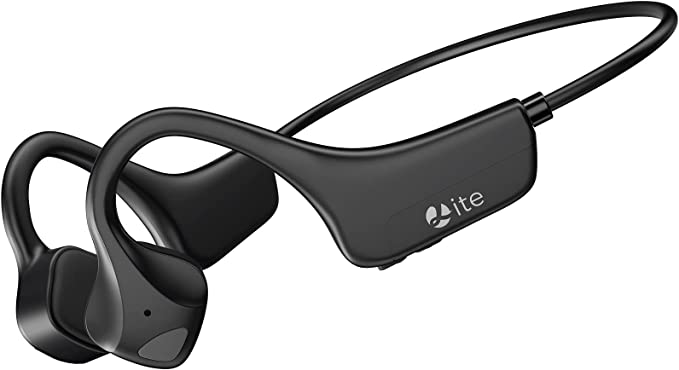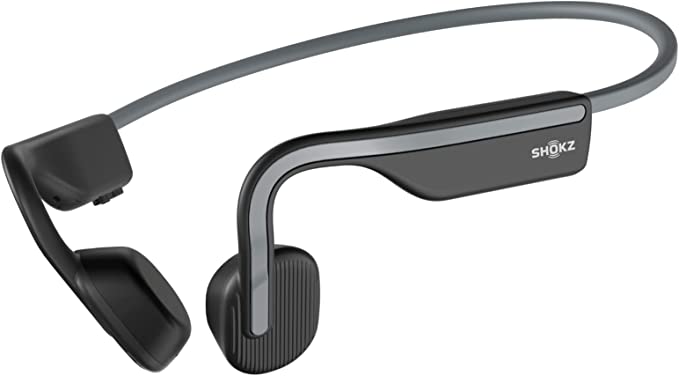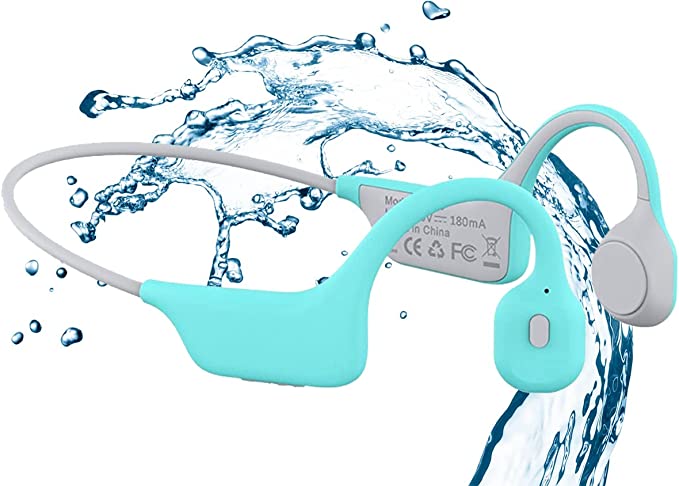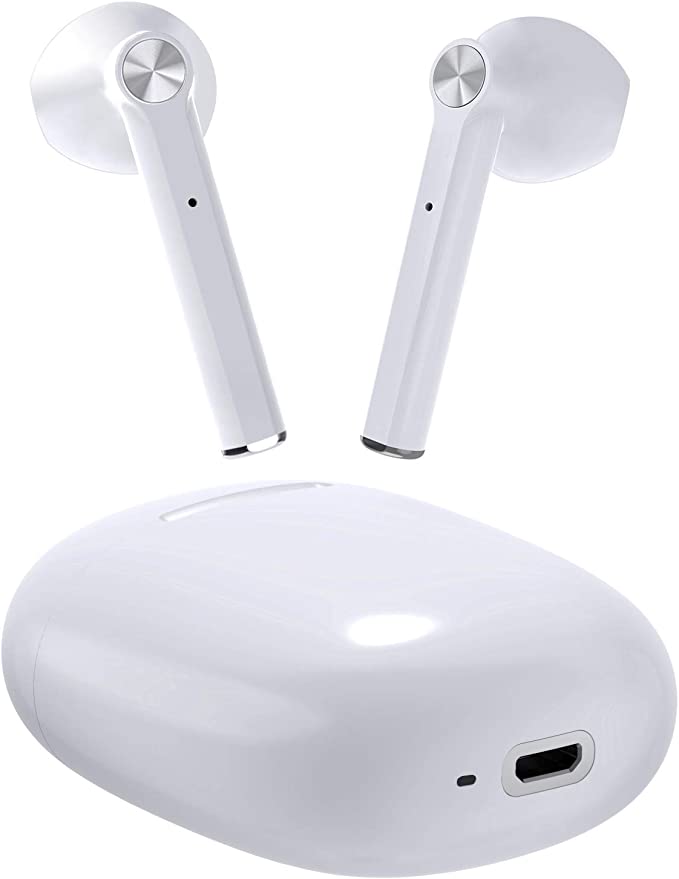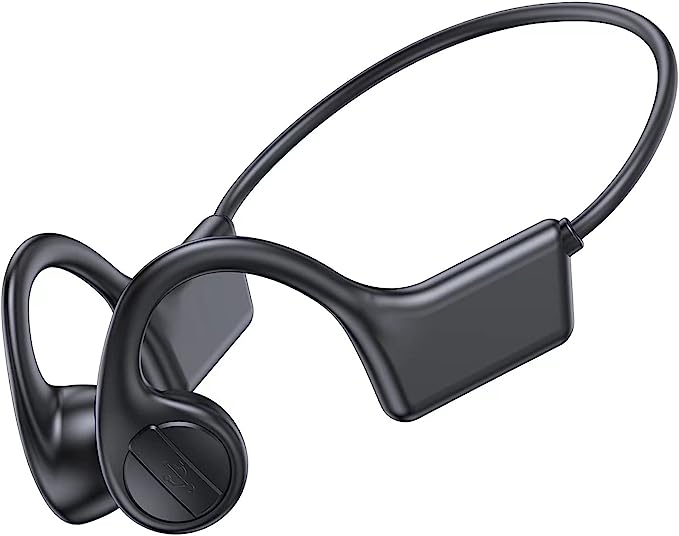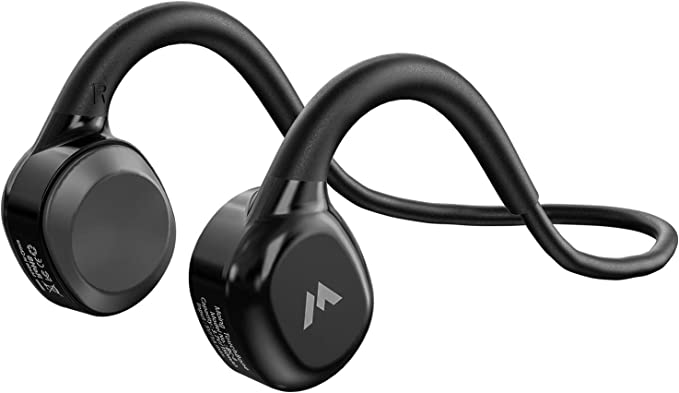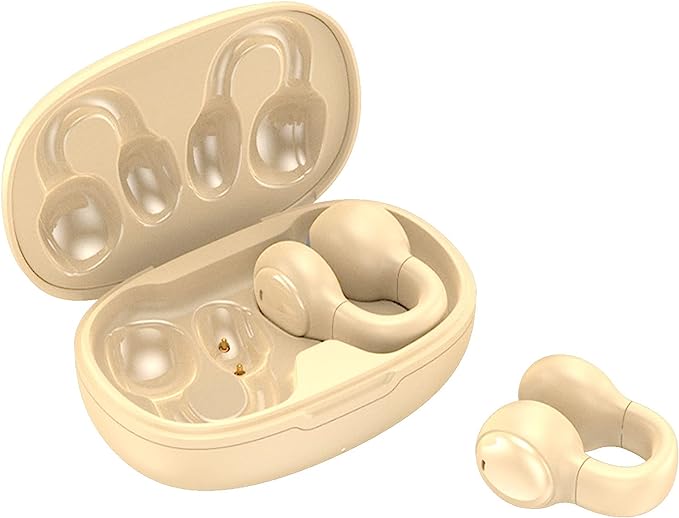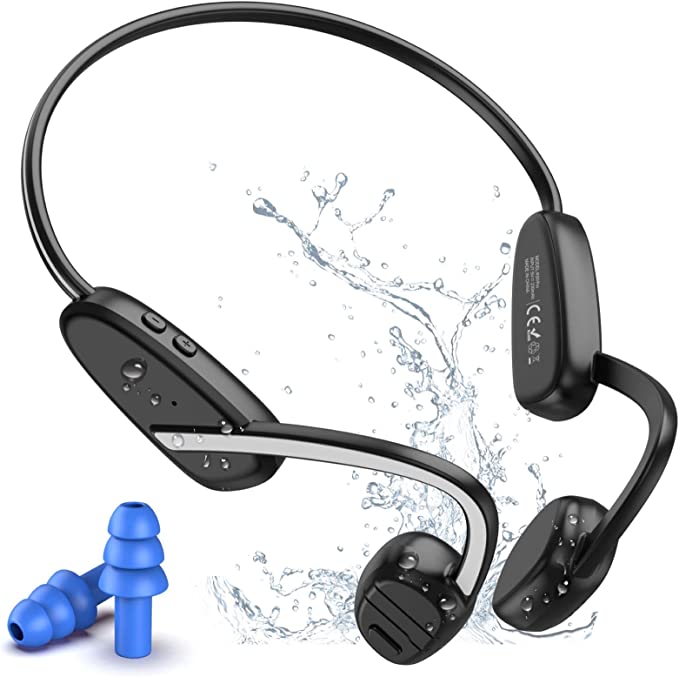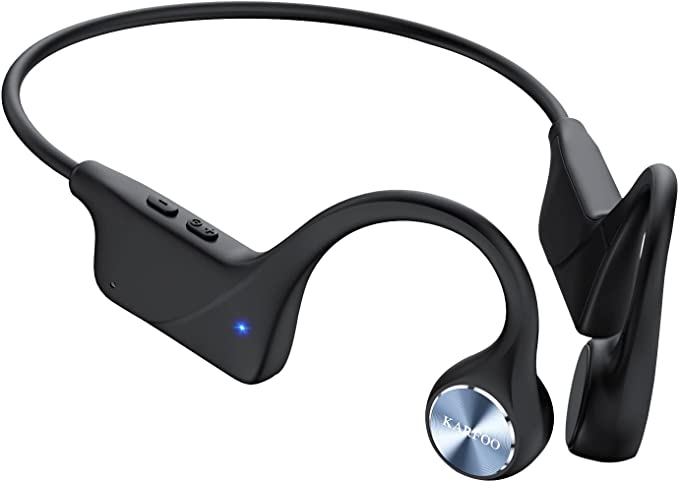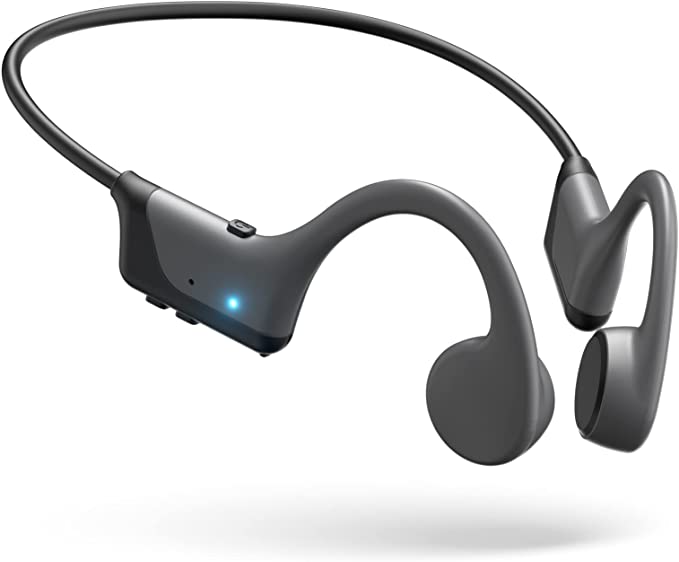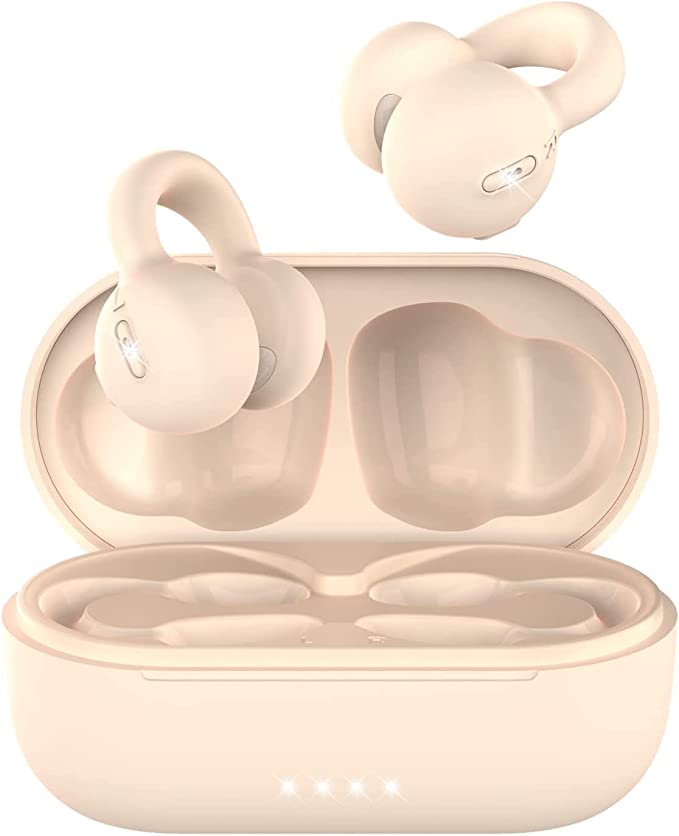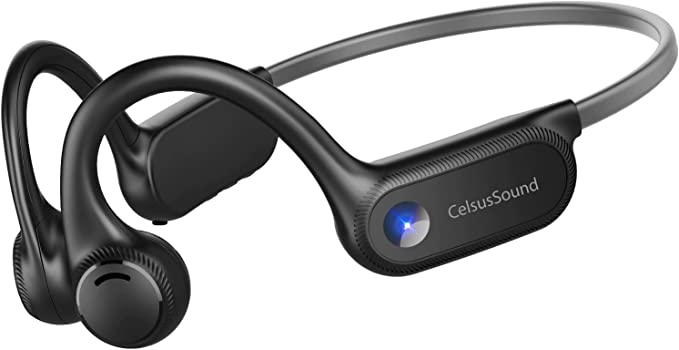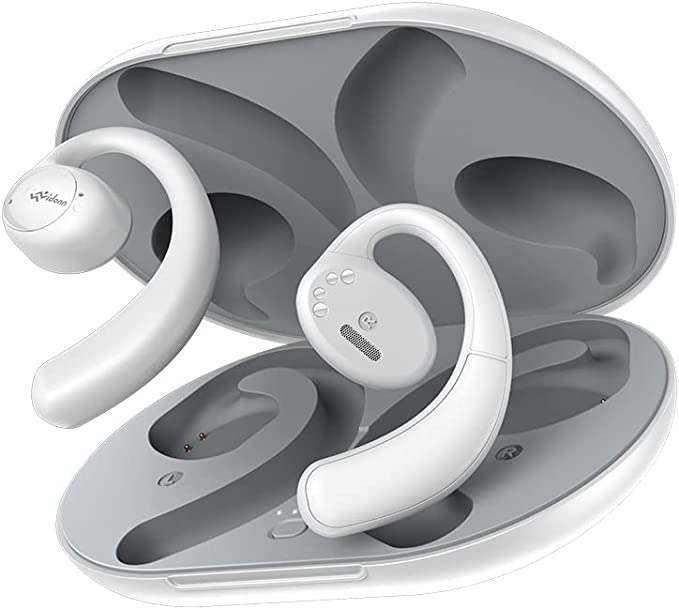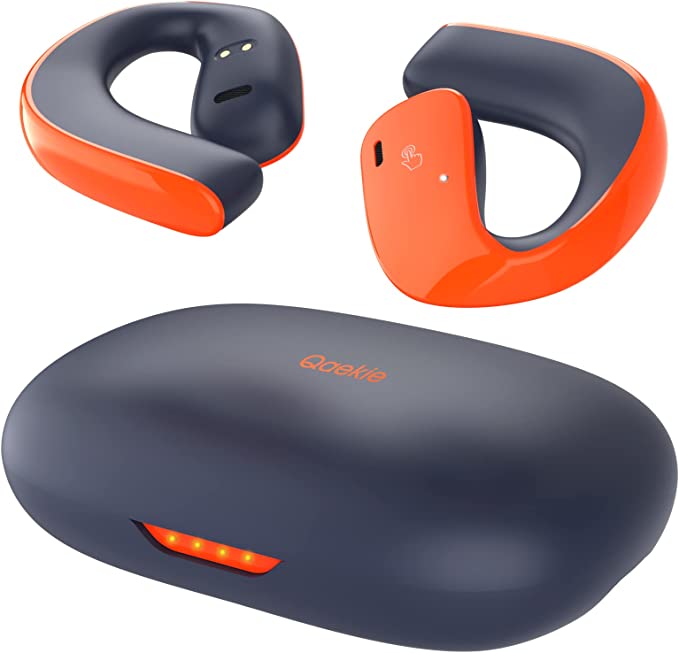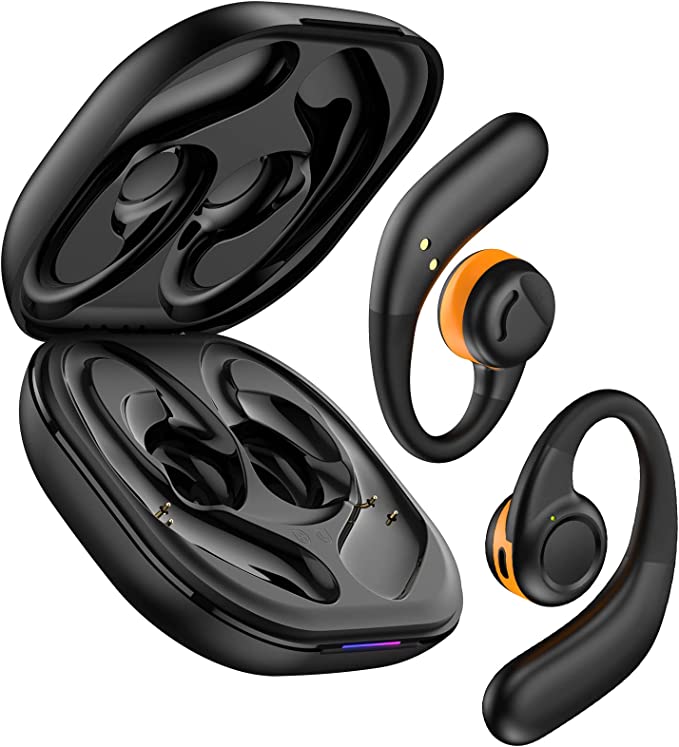MOING DG08 Bone Conduction Headphones: Safe & Open-Ear for Running
Update on July 24, 2025, 6:46 a.m.
Picture this: Vienna, early 19th century. Ludwig van Beethoven, the titan of music, is losing his most precious sense. Deafness is descending upon him, yet his most powerful compositions are still to come. Legend has it that in his struggle to hear, he discovered a workaround. By clenching a wooden rod between his teeth and pressing the other end to his piano, he could perceive the instrument’s vibrations through his jawbone. The sound traveled not through the air to his failing ears, but through the solid structure of his own skull. He was, in essence, experiencing a form of bone conduction.
This centuries-old trick, born of desperation and genius, is now at the very heart of a modern technological quest: the pursuit of a safer, more integrated way to listen. It’s a quest to solve a uniquely 21st-century problem, one that Beethoven could never have imagined.

The Modern Dilemma: Immersion vs. Awareness
We live in an age of personal soundtracks. With a tap on a screen, we can summon a symphony, a podcast, or a driving beat to accompany our run, our commute, our workday. Traditional headphones and earbuds are masterfully engineered to create a private, immersive sonic bubble. They are sanctuaries of sound. But this sanctuary has a moat. By sealing our ear canals, they cut us off from the auditory landscape of the world around us—the subtle hum of an electric car approaching from behind, the shouted warning of a fellow cyclist, the simple “hello” from a passing neighbor.
For athletes and urban dwellers, this isolation isn’t just a feature; it’s a liability. The very technology designed to enhance our experience can simultaneously endanger it. This raises a fundamental question: how can we have our soundtrack and safely hear the world, too? The answer, it turns out, lies in revisiting the two distinct pathways sound can take to our brain.

Decoding the Pathways of Sound
Think of sound traveling to your inner ear, the cochlea, as a journey with two possible routes. The first is the superhighway of air conduction. This is the path we know best. Sound waves, which are vibrations traveling through the air, are collected by our outer ear, funneled down the ear canal, and cause the eardrum to vibrate. It’s an incredibly effective system, but it has a single point of entry that can be easily blocked.
The second route is the secret path of bone conduction. Imagine a stone dropped in a still pond. The ripples spreading across the surface are like air conduction. But the thud of the stone also sends a vibration through the solid ground of the pond’s bank. That is bone conduction. It bypasses the ear canal and eardrum entirely, sending vibrations directly through the bones of the skull to the cochlea.
This scientific distinction has led to a fork in the road for modern “open-ear” audio. One path uses “true” bone conduction transducers that vibrate against the cheekbones. The other uses highly specialized, miniature speakers that employ directional audio, beaming sound waves precisely towards the ear canal without physically covering it. Both achieve the primary goal of leaving the ears unobstructed, but they represent different engineering philosophies for solving the same core problem.

A Modern Interpretation: The MOING DG08 in Context
This brings us to contemporary devices like the MOING DG08 Wireless Headphones. To view it merely as a set of tech specs on a retail page is to miss the point. It’s better understood as a modern interpretation of Beethoven’s rod—a purpose-built tool designed to reconcile our digital lives with our physical reality. It embodies a design philosophy that shifts the focus from pure audio fidelity to holistic user safety and comfort.
This philosophy is evident not just in its open-ear nature, but in the meticulous details of its construction. Take its IP56 rating. This isn’t just a random collection of letters and numbers; it’s a standardized declaration of resilience governed by the International Electrotechnical Commission’s (IEC) 60529 standard. The ‘5’ signifies a high degree of protection against dust ingress, while the ‘6’ certifies its ability to withstand powerful jets of water. This transforms the device from a fragile piece of electronics into robust survival gear for your workout, capable of shrugging off torrential sweat and unexpected downpours.
This “survival gear” ethos extends to its very skeleton. The neckband is crafted from titanium, the same material valued by the aerospace and medical industries for its incredible strength-to-weight ratio and biocompatibility. It’s a choice that provides both the feather-light comfort needed for hours of wear and the flexible durability to survive being tossed in a gym bag. This isn’t just a design choice; it’s an application of material science aimed at making the technology disappear, leaving only the experience. Complemented by reflective strips for low-light visibility, the DG08 presents itself not as a simple audio peripheral, but as a comprehensive piece of athletic equipment.

The Future of Hearing is Augmented, Not Isolated
The journey from a composer’s simple wooden rod to a sophisticated piece of wearable technology charts a profound shift in our relationship with sound. For decades, the pinnacle of personal audio was isolation—the perfect seal, the deepest bass, the most complete escape. But we are now entering an era where the ultimate goal is no longer isolation, but augmentation.
The future of hearing, suggested by devices in the open-ear audio category, is not about replacing reality with a digital soundtrack. It is about seamlessly weaving that soundtrack into the fabric of our environment. It’s about creating a personal sensory experience that is layered and rich, where you can be motivated by your music and alerted by the world.

Choosing a pair of headphones is therefore no longer a simple question of sound quality. It is an act of curating your own awareness. It is a decision about how you wish to move through the world, and how much of that world you wish to let in. The symphony is no longer just in your ears; for those who choose it, it’s a vibration you can feel in your very bones.
